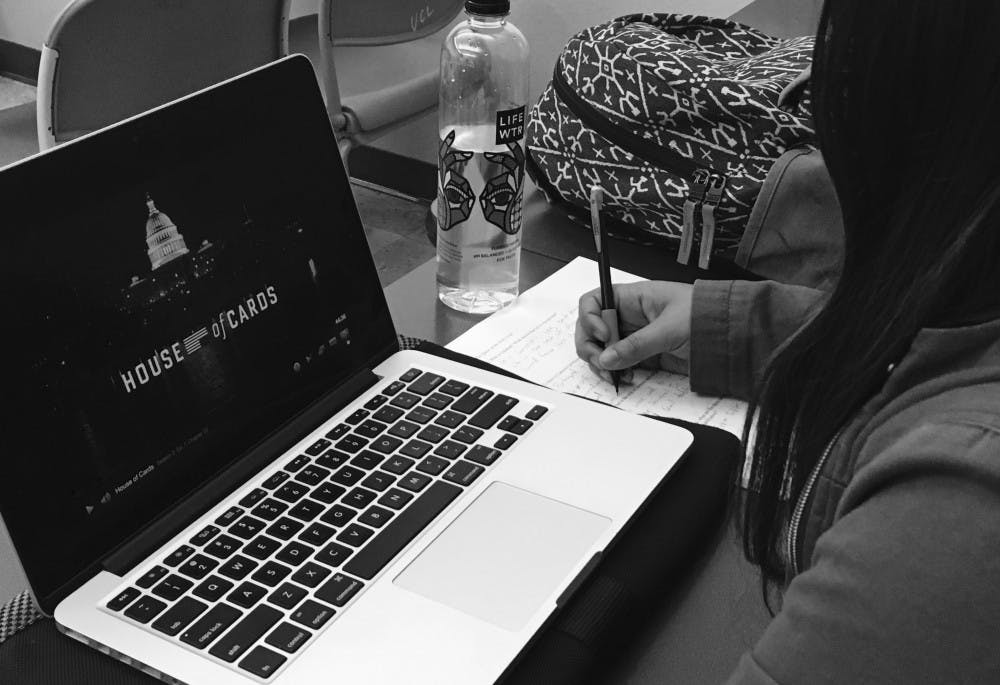One of the most effective ways to understand politics is not commonly used in the classroom and that needs to change.
Students are beginning to find political education through television and other multimedia. As more of students' lives and cultural consumption take place online, television shows and social media have become indispensable learning resources.
Despite the fictional premises they present, shows like Veep, House of Cards and Scandal make political processes like Senate votes and media manipulation more accessible and interesting to students that would otherwise be bored by classroom settings. When politics are presented through a lens of absurdity, extreme drama or comedy, students who have interests in government can better understand its functions.
"I've learned plenty about the election and incarceration processes through television," David Huff, a member of ASU Young Democrats, said. His experiences watching Veep gave him insight into how the government works, and he found other shows to keep up with current events.
"Talk shows like Chelsea Handler's do a better job of keeping you updated on current events and what they mean," he said.
Huff brings up an important point. While there is much to be learned from a 45-minute episode of House of Cards, the typical human attention span is more conducive to a short YouTube video. That's where people like Handler, Stephen Colbert and Seth Meyers can be helpful in teaching students about politics. Although their shows are closer to the length of regular television programming, the highlights and inflammatory portions of their shows can normally be found in the form of an edited video posted on social media.
With cultural consumption shifting away from traditional television despite the election's short term boon for ratings, political education can and should be projected to occur through Netflix and social media.
Still, this shift raises concerns over bias in the way information is presented.
"Late night shows and network television can be biased in the message they get across, and trying to get ratings gets in the way of unbiased presentation," Huff said. Even the deeply resourced material Netflix produces will go out of date, and rarely should online political commentary be trusted unconditionally.
Tonight! Reports of a disorganized White House are sadly not exaggerated at all... #LSSC pic.twitter.com/oWid6bHnr4
— The Late Show (@colbertlateshow) February 7, 2017
This is where television and social media fall short in being able to educate. Television episodes are held back by time and material constraints that require them to reach to create entertainment value. Textbooks and course curricula typically represent the grand accumulation of knowledge on a certain subject, but they can quickly become outdated. The timeliness of television and social media is a tradeoff for accuracy and breadth of information.
"I do certainly feel like the political characters on TV are more semi-realistic," said Haley Nadone, another student member of ASU Young Democrats. Similarly, a former senior adviser to President Obama has said he found that the caricatures of Veep are closer to the real thing than the alternate reality that House of Cards portrays.
This is where a marriage of media is necessary to improve how politics is taught in the classroom.
"Politics in television and social media could definitely be used in a classroom setting," Huff said, but the gaps that those media create would need to be filled in by more traditional forms of education.
Instead of intermittently using social media and television as a diversion, political educators should incorporate the enticing and timely natures of political social media and television to create a more holistic education.
Students recognize that the timeliness of social media and television present solutions to some of the problems in political education. In the ever-changing political landscape of today, the challenge is upon educators to incorporate television and social media when no appropriate precedent can be found in textbooks and curricula.
Reach the columnist at jbaker22@asu.edu or follow @jonahpbaker on Twitter.
Editor’s note: The opinions presented in this column are the author’s and do not imply any endorsement from The State Press or its editors.
Want to join the conversation? Send an email to opiniondesk.statepress@gmail.com. Keep letters under 300 words and be sure to include your university affiliation. Anonymity will not be granted.
Like The State Press on Facebook and follow @statepress on Twitter.




